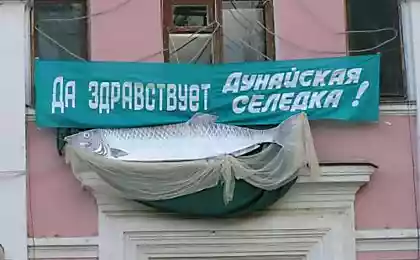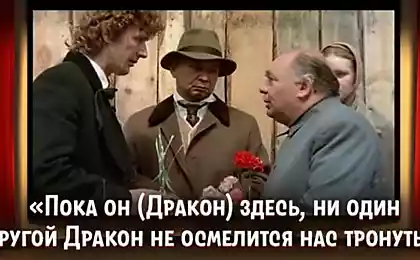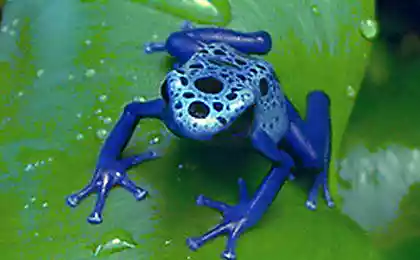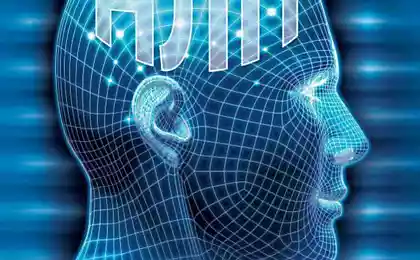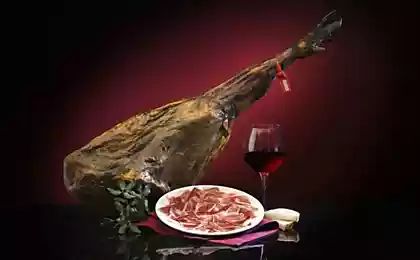1242
Delicacies that can kill
In the United States compiled rating of forbidden delicacies, some of which are able to kill or maim the very gourmet.
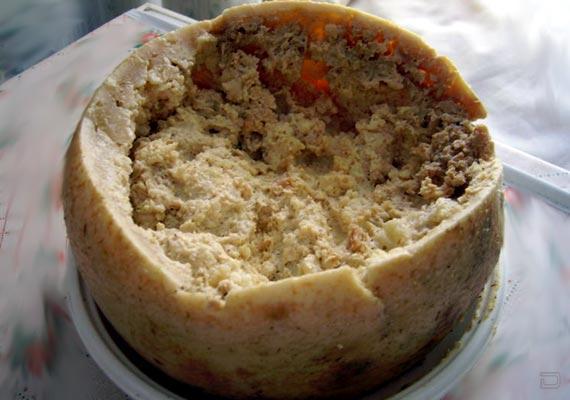
1. In the first place in the ranking of original recipes according to Newsweek magazine is Kafu Marzio - a special type of cheese produced in Sardinia which contains larvae of flies. Translated from the Sardinian Casu Marzu means "rotten cheese", and colloquially also used the phrase "worm-eaten cheese».
Cas Marzio longer withstand normal fermentation stage, thereby bringing to a state of decay caused by the digestive activity of larvae of the cheese fly. Worms accelerate the process of decomposition and decay of fat contained in the cheese, because of what the product becomes soft.
The free sale this cheese not to find even in Italy as this delicacy teeming with insects, can shock even a gourmet. And larvae enough smartly move in a cheese head and feel at home. Sometimes they can jump a distance of 15 centimeters, therefore during meal it is recommended to protect eyes.
However, farmers in Sardinia, as well as in Piedmont and Bergamo in northern Italy remember secrets of cooking this delicacy. On the big secret they will execute the exotic order for fearless "the devourer of larvae».

2. Fugu, or puffer fish, is terribly poisonous fish, whose internal bodies and needles bear death. However, in Japan and Korea meat of this marine life is considered a delicacy. They say that all depends on the skill of the chef, which is in the process of preparing fugu, or Fish-dogs should neutralize its poison.
The organism produces a fugue one of the strongest poisons of natural origin tetrodotoxin, which renders the action of nerve agents.
Fish is prepared as soup, and roast. Fugu dishes are served at Japanese restaurants in New York, Chicago, Philadelphia and Los Angeles. However, in Florida catching puffer fish is prohibited.
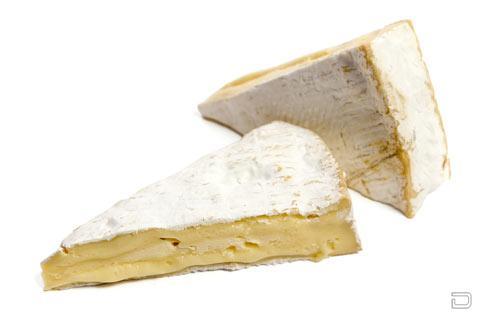
3. The recipe brie cheese is one of the oldest in the French kitchen. Therefore, symbolically, as now this cheese is on sale together with a mold which testifies to original technology of its preparation. This product is considered perishable, therefore present brie can only be purchased in France.
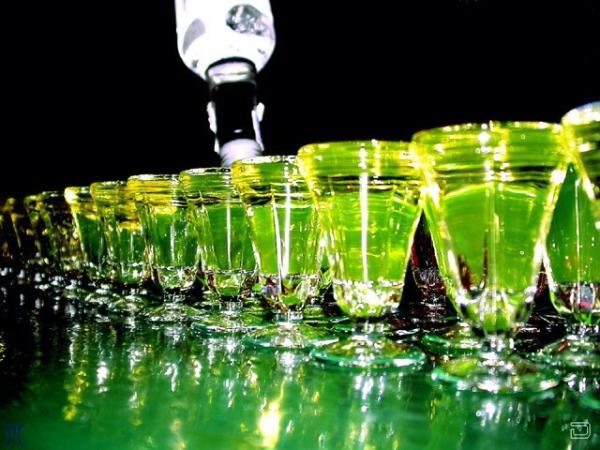
4. To prepare absinthe used an aphrodisiac - a substance that stimulates sexual desire and cause hallucinations. This drink was most popular in the middle of the XIX century in France.
In 1912, the US Department of Agriculture banned the production of absinthe, since it was recognized as harmful to the human nervous system.
Currently, absinthe is allowed to prepare only experienced bartenders, and the need to adhere strictly to the dosage of thujone - this substance, part of the liqueur, has hallucinogenic properties.
However, scientists have proved that in the recipe absinthe thujone content of the XIX century was also slightly.

5. Sassafras or sassafras used for centuries the inhabitants of North America as tea infusion and anaesthetising. And Creoles added it in soups and stews.
The plant contains a substance safrole, which was recognized in the 1960s, a carcinogen and banned for use in food.
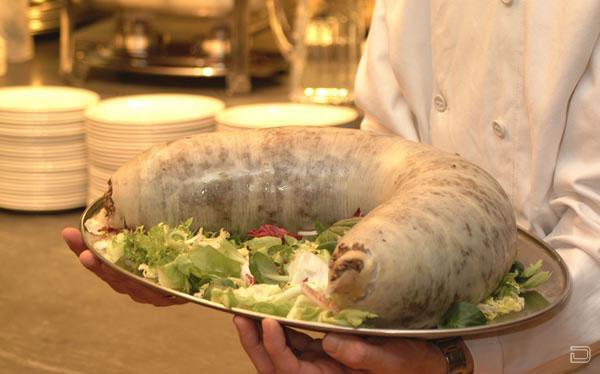
6. The national Scottish dish haggis is a sheep's tripe stuffed with giblets and spices. In 1989, it was also banned in the US since the mad cow sick animals whose insides were used in food, could infect human encephalopathy.
In the UK, questioned the need for such a ban, so the Scottish haggis supermarkets are still selling.
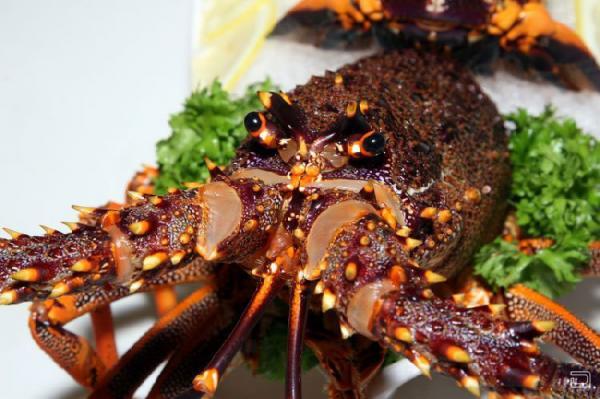
7. In 2006, the supermarket chain Whole Foods has refused sale of lobsters under the pressure of protests from public organization PETA and other fighters for the humane treatment of animals. Human rights activists harassed transportation conditions of these crustaceans, which, in their view, brought the lobster mass torture.
Add that to the Italian province of Reggio Calabria is prohibited digestion of lobster in a living form.
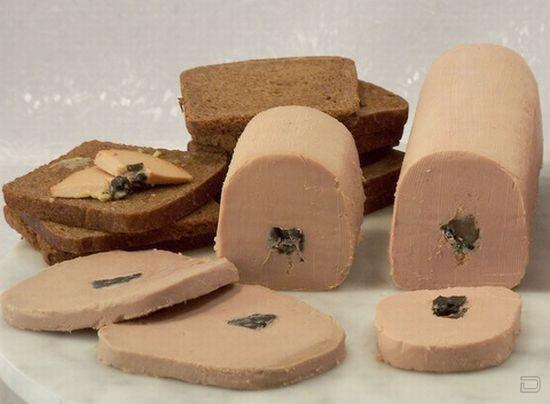
8. Gourmets from Chicago, adoring foie gras, received a delay in meeting their preferences until 2012. Only the local authorities have refused to ban the production and sale of this delicacy, which is made from the giant liver overfed goose or duck.
For gourmet whim of birds intended for foie gras, force-fed through a special tube that is inserted into the beak. On the day of the geese have to eat about two kilograms of food. Because of this power supply poultry liver increases and reaches 1, 5 kg.

1. In the first place in the ranking of original recipes according to Newsweek magazine is Kafu Marzio - a special type of cheese produced in Sardinia which contains larvae of flies. Translated from the Sardinian Casu Marzu means "rotten cheese", and colloquially also used the phrase "worm-eaten cheese».
Cas Marzio longer withstand normal fermentation stage, thereby bringing to a state of decay caused by the digestive activity of larvae of the cheese fly. Worms accelerate the process of decomposition and decay of fat contained in the cheese, because of what the product becomes soft.
The free sale this cheese not to find even in Italy as this delicacy teeming with insects, can shock even a gourmet. And larvae enough smartly move in a cheese head and feel at home. Sometimes they can jump a distance of 15 centimeters, therefore during meal it is recommended to protect eyes.
However, farmers in Sardinia, as well as in Piedmont and Bergamo in northern Italy remember secrets of cooking this delicacy. On the big secret they will execute the exotic order for fearless "the devourer of larvae».

2. Fugu, or puffer fish, is terribly poisonous fish, whose internal bodies and needles bear death. However, in Japan and Korea meat of this marine life is considered a delicacy. They say that all depends on the skill of the chef, which is in the process of preparing fugu, or Fish-dogs should neutralize its poison.
The organism produces a fugue one of the strongest poisons of natural origin tetrodotoxin, which renders the action of nerve agents.
Fish is prepared as soup, and roast. Fugu dishes are served at Japanese restaurants in New York, Chicago, Philadelphia and Los Angeles. However, in Florida catching puffer fish is prohibited.

3. The recipe brie cheese is one of the oldest in the French kitchen. Therefore, symbolically, as now this cheese is on sale together with a mold which testifies to original technology of its preparation. This product is considered perishable, therefore present brie can only be purchased in France.

4. To prepare absinthe used an aphrodisiac - a substance that stimulates sexual desire and cause hallucinations. This drink was most popular in the middle of the XIX century in France.
In 1912, the US Department of Agriculture banned the production of absinthe, since it was recognized as harmful to the human nervous system.
Currently, absinthe is allowed to prepare only experienced bartenders, and the need to adhere strictly to the dosage of thujone - this substance, part of the liqueur, has hallucinogenic properties.
However, scientists have proved that in the recipe absinthe thujone content of the XIX century was also slightly.

5. Sassafras or sassafras used for centuries the inhabitants of North America as tea infusion and anaesthetising. And Creoles added it in soups and stews.
The plant contains a substance safrole, which was recognized in the 1960s, a carcinogen and banned for use in food.

6. The national Scottish dish haggis is a sheep's tripe stuffed with giblets and spices. In 1989, it was also banned in the US since the mad cow sick animals whose insides were used in food, could infect human encephalopathy.
In the UK, questioned the need for such a ban, so the Scottish haggis supermarkets are still selling.

7. In 2006, the supermarket chain Whole Foods has refused sale of lobsters under the pressure of protests from public organization PETA and other fighters for the humane treatment of animals. Human rights activists harassed transportation conditions of these crustaceans, which, in their view, brought the lobster mass torture.
Add that to the Italian province of Reggio Calabria is prohibited digestion of lobster in a living form.

8. Gourmets from Chicago, adoring foie gras, received a delay in meeting their preferences until 2012. Only the local authorities have refused to ban the production and sale of this delicacy, which is made from the giant liver overfed goose or duck.
For gourmet whim of birds intended for foie gras, force-fed through a special tube that is inserted into the beak. On the day of the geese have to eat about two kilograms of food. Because of this power supply poultry liver increases and reaches 1, 5 kg.

